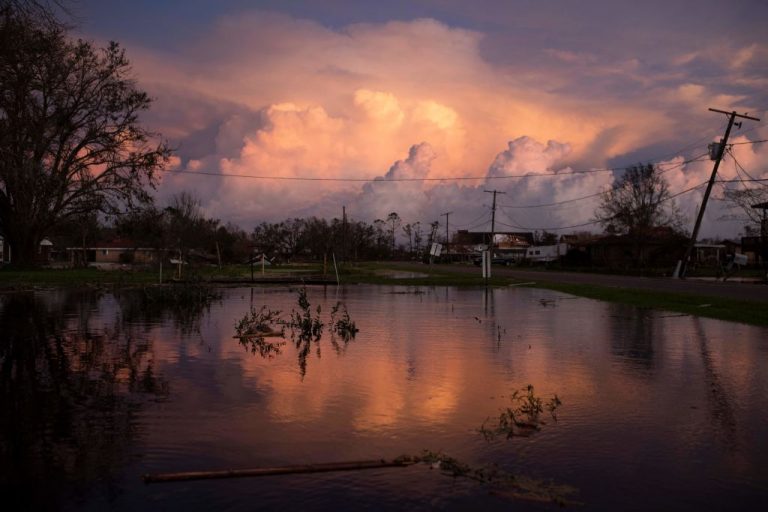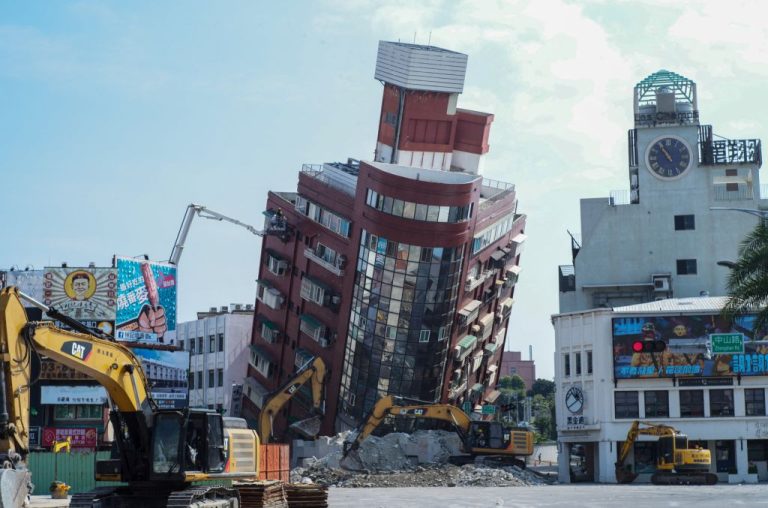A deadly void appeared on a dark busy highway awash with torrential rains from Hurricane Ida, when a 60 foot wide, 30 foot deep hole suddenly opened up in front of drivers. According to Mississippi Highway Patrol Cp. Cal Robertson, drivers may not have seen the hole and cars were left “stacked on top of each other,” on both east and westbound lanes. Two people were killed and ten injured in the incident, which took place shortly before 10:30 p.m. Monday on Highway 26 west of Lucedale, Mississippi, about 60 miles northeast of Biloxi. Robertson said that many people drove their cars into the hole, with their vision obscured by the pouring rain. One high school senior is in critical condition after the car he was driving dropped into the hole.
Kelly Castleberry, district engineer for the Mississippi Department of Transportation, said “It is a slide, which means the ground under the roadway and embankment was super-saturated and we can tell right now that’s what caused the slide.” A berm was washed away beneath the road, leaving a swath of newly exposed red clay and creating a hole 20 – 30 feet deep that spanned both east and west-bound lanes when the highway above it collapsed.
Mississippi southern district Transportation Commissioner Tom King said he knew of nothing unusual regarding the soil composition at the point of the slide, but said “we just got bombarded” with an overwhelming downpour. The National Weather Service reported that 13 inches fell in the state and another source reported that 8 fell locally, but it was not detailed how rapidly this occurred.
State troopers, emergency workers, and rescue teams responded to the incident, due to the many unknowns related to massive weather events. According to official data, the busy road typically carries the weight of between 3,100 and 5,700 vehicles on an average day. School was closed the day after due to the logistical impasse created by the damaged highway. “It’s going to take us a while to redo it and make it right again and make it safe for folks to go over,” Commissioner King said of the eroded bed of the highway.
How red clay contributed to the collapse of Highway 26
Research by Vision Times staff reveals that conditions may be ripe for additional infrastructure instability in the area. Footage from a Biloxi Sun Herald drone video shows that local soil — red clay — comprised the subsoil beneath the highway embankment; whether it had been reinforced with basalt is unclear.
Success
You are now signed up for our newsletter
Success
Check your email to complete sign up
As southern builders all know, red clay is a highly plastic soil that, like most heavy clay content soils, is prone to instability when saturated. According to engineering experts, the subsequent drying of the soil in late summer; following the swelling that occurs in plastic clay soils during a wet year, brings excessive shrinkage. The sudden saturation of August’s dry and brittle soil with 8 to 13 inches of heavy rain seems to have had a disastrous effect upon Mississippi’s busy Highway 26.
Homes in northern Alabama, the state adjacent and east of Mississippi, are advised to be built with sufficient drainage. Otherwise the clay will act as a sponge, swelling and shrinking in response to the weather. A construction engineering and inspection service in North Alabama explained that the greatest instability for local clay soils is after a season of heavy rain has been followed by the dry months of July and August. Since 2020, Alabama’s neighboring state Mississippi has experienced unprecedented flooding.
Jade Engineering firm’s website explains that, after very wet years, “The soils that stayed extremely wet throughout the year, and swelled accordingly, shrunk dramatically by the time July and August rolled around.” Jade Engineering explains that a construction “resting on this formerly wet ground also settles (dramatically) along with the shrinking clay.”













